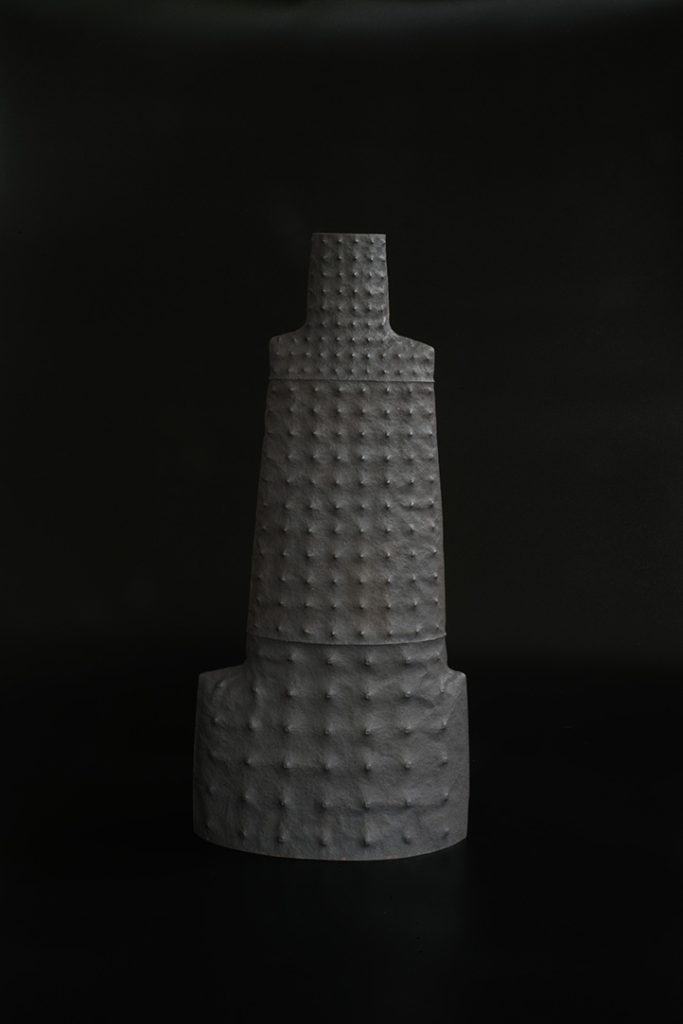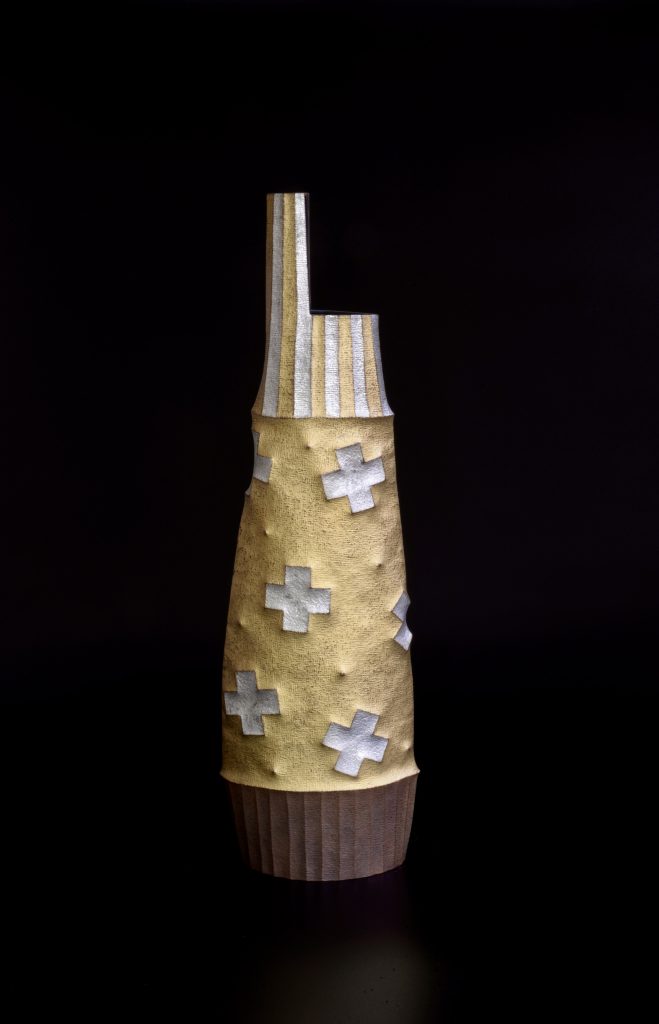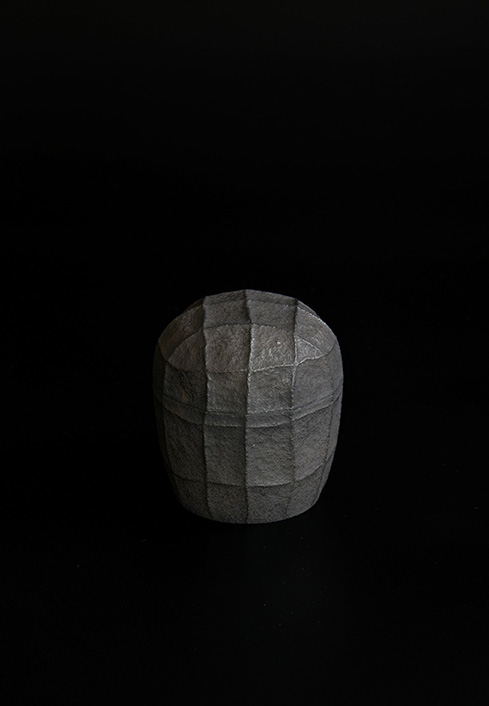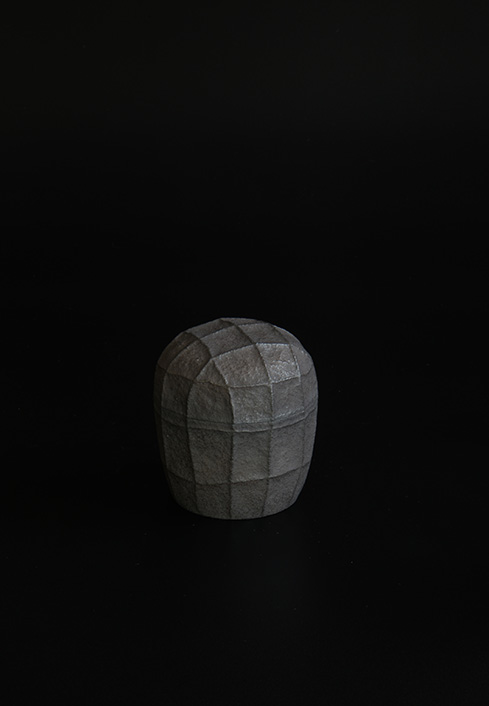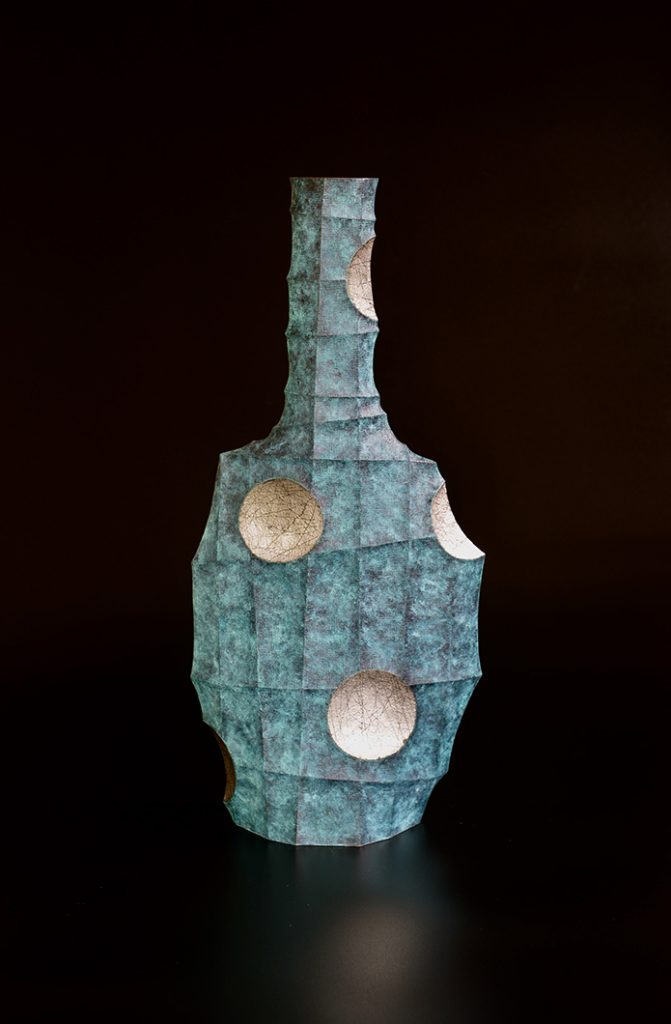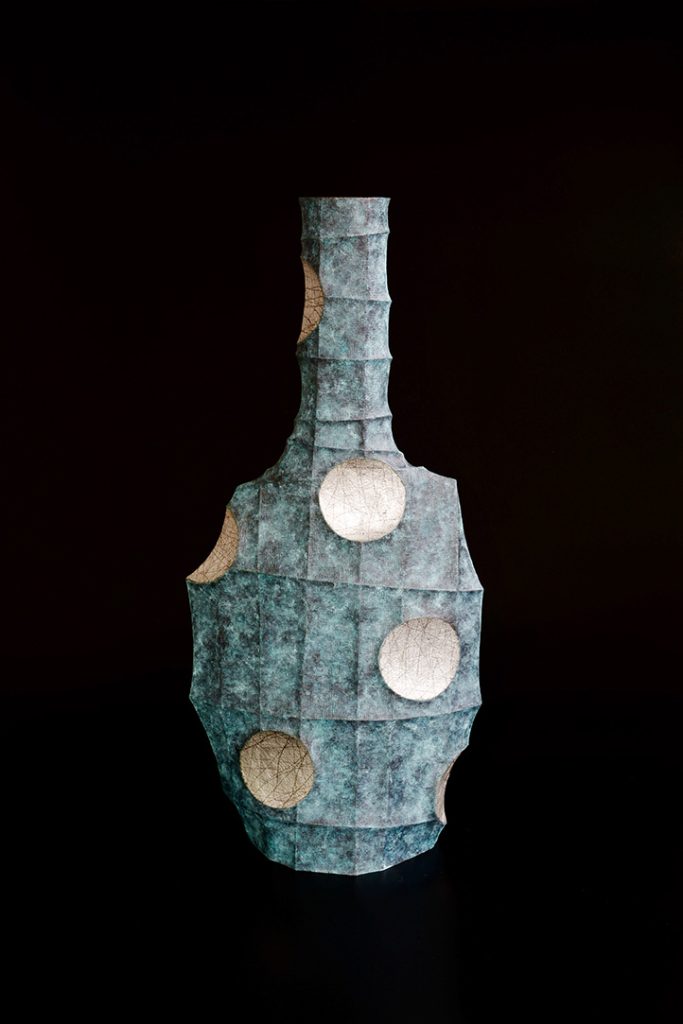Metal Vessels
Introduction by Keiko Fukai
A metalwork artist had once said to me, “How I wish I could be like Kaneko and unknowingly capture with my hands the inspiration that descends from the skies, and without hesitation, give shape to these ideas with utmost finesse.”
From time to time having captured glimpses of Kaneko at a standstill and ceasing production for days at end, or reworking and starting over a work that he had once completed, I know that such sentience or ideas do not easily come upon one like some message from above. Having said that, I can to some extent understand this comment.
Natural forms, lines, and patterns, while presenting an urban and sharp impression, instill those who look upon them with a sense of peace and comfort. At a glance, one’s brain senses the weight of the metal, finding it to be surprisingly light when held in one’s hands. Despite the colors having been produced based on classical techniques, the result are hues and tones like never been seen before. Works in which these contradictory elements are in perfect harmony with one another, may indeed give people the impression that they had been created due to some divine inspiration.
I studied metal crafts at university, and learned basic traditional Japanese techniques. With these acquired techniques serving as a foundation, I engage in searching for my own means of expression through processes of trial and error. Nevertheless, rather than simply inheriting these techniques, I place significance on discerning their meaning within the current context, as well as making new personal discoveries. While I embrace the wonderfulness of the world of crafts, I also gain great inspiration from other fields. I find myself influenced by a diverse range of fields including modern sculpture, impressionist painting, and contemporary product design. Furthermore, the origins of my work can be traced to forms in nature. I constantly consider the inevitable formability of each of these forms that exist within the natural world as a source of reference when producing work. That is to say, no part of their shape or form is deemed unnecessary. I believe that all shapes have meaning, and it is always essential to study and inspect this.
I mainly create works using metal as my material. I often employ the use of relatively thin sheets of metal. The reason is that I like the expressions that are conceived by making use of the malleability of the thin metal sheets. What beautifully emerge are expressions fraught with a sense of tension as manifest through the tautness and distortions of the metal. I hit the metal sheets with a rod-shaped metal tool called a chisel to apply pressure from the outside. The force extends its influence, giving rise to various inevitable phenomena on the metal sheets. I capture these expressions and assemble them together into a work. Although metal tends to be regarded as being hard and cold, it also harbors impressions of softness and warmth. I wish to convey this.
Forms in nature always soothe and bring comfort to our minds, like trees in a forest or the hushed sound of waves upon the shore. I hope my works could also become such a presence. I wish to create works that make people want to take it in their hands, gaze upon forever, and always keep close to them.


